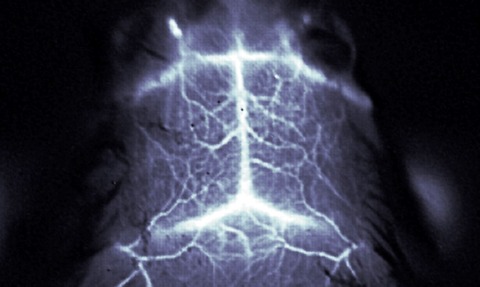Brain imaging may combat migraine
8 Aug 2014

Scientists in the US have developed a brain imaging technique using lasers and carbon nanotubes.
A team of scientists from Stanford University has developed a non-invasive imaging technique that provides a clear view of blood flow in the brain (see image).
The study, which was conducted using mice, could one day be applied to humans as a means of providing vital information in the study of stroke and migraines - and possibly Alzheimer’s and Parkinson’s diseases, the researchers claim.
“Eventually, we might be able to use NIR-IIa to learn how each neuron functions inside of the brain
First author Guosong Hong
The study has been published in the journal Nature Photonics.
This technique differs from other non-invasive brain imaging techniques, such as CT and MRI scans, because it makes it possible to visualise individual vessels or groups of neurons, the researchers say.
To perform the study, researchers injected water-soluble carbon nanotubes into the bloodstream of a live mouse. The researchers then directed a near-infrared laser over the rodent’s skull.
The light causes the specially designed nanotubes to fluoresce at wavelengths of 1,300-1,400 nanometres - which, according to the researchers, represents a ’sweet spot’ for optimal penetration with very little light scattering.
The fluorescing nanotubes can then be detected to visualise the blood vessels’ structure.
Using this technique, the scientists were able to view roughly three millimetres beneath the scalp.
Meanwhile, the technique also made it possible to visualise blood coursing through single capillaries only a few microns across.
First author Guosong Hong said: “The near infrared-IIa imaging (NIR-IIa) light can pass through intact scalp skin and skull and penetrate millimetres into the brain, allowing us to see vasculature in an almost non-invasive way. All we have to remove is some hair.”
Although not ready for human clinical trials, Hong said if approval for injecting carbon nanotubes was gained, and light penetration depths were increased, it could be possible.
“Eventually, we might be able to use NIR-IIa to learn how each neuron functions inside of the brain,” Hong said.

